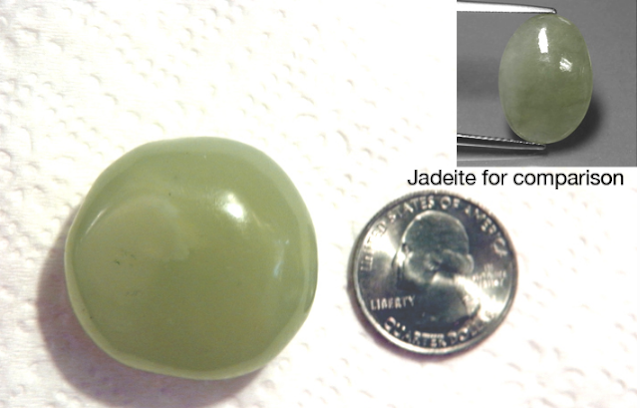Written by the TreasureGuide for the exclusive use of treasurebeachesreport.blogspot.com.
 |
| Dug Lead Whatzit. |
What do you think it is? I'll get back to that below.
---
Darrel S. sent the following message.
Golden Sand still closed. Not much found other some junk jewelry and tabs! Beach was in 2 parts. 1st part wall 6 feet high and flat to 2nd part. 2nd wall dropped off with very low pockets or scoops. Flat out into low tide surf. The rope that we saw at Turtle Trail was past the steel wall towards Orchid Resort. 3 employees were cutting it with machetes and removing it from the beach. That is long way to travel from where we saw it on Sunday. I found 3 nice Cowrie shells. Been a long time that any good ones have been seen in this area.
Darrel and friends detected Round Island Park today and found a good bit of scrap iron and some coins. He said it wasn't as worked as he expected.
Thanks for the reports Darrel.
---
The public is being asked to help solve the DB Cooper case.
True Ink founder Geoffrey Gray says he received the case files—including evidence assessments and interviews with jet passengers—while researching a 2011 post on the hijacker, later branded DB Cooper, but couldn't review them all, per the Washington Post.
"We have access to all these original DB Cooper case files and we want help from the public, citizen sleuths to help solve this case," he says. Authorities have had almost no leads in the decades since Cooper boarded the flight from Portland, Ore., to Seattle on Nov. 24, 1971. The only physical evidence is a cache of about $6,000 from the heist found along the banks of the Columbia River in 1980, and theories abound. One retired FBI agent suspects he landed in a lake and died. Others believe Cooper was really Richard McCoy, who copied Cooper's crime in 1972 and was later killed in an FBI shootout, notes Fox 13 (Or perhaps Cooper was a grocery manager from Michigan.)...
http://www.newser.com/story/234717/db-cooper-case-could-still-be-solved-with-your-help.html?utm_source=part&utm_medium=foxnews&utm_campaign=rss_science_syn
Thanks to Dean for that link.
---
Did you figure out what the item shown at the top of the post is?
I dug the item not too long ago and thought I knew what it might be but I really wasn't confident about it at all. It stayed in my TBR (To Be Researched) pile for a while. Today I did a little research and now am pretty sure that I know what it is.
 |
| Source: Odyssey Virtual Museum See link below. |
I thought it was a lead bottle collar. If you look at the inside of the ring it has a ridge which spirals away from one edge. A lead cap would screw onto it.
Here is what the Odyssey Virtual Museum says.
A total of 127 fragments of glass were excavated from the “Tortugas” shipwreck, including square-sectioned case bottles. The bases of these bottles are all medium olive green in color and contain air bubbles. Glass rims and neck sherds were recovered still attached to 14 lead screw collars and caps that originally sealed some of the “Tortugas” ship’s bottle mouths. Data suggests a minimum presence of 16 square-sectioned bottles on the ship...
The two-piece permanent lead collars and caps that originally closed the bottles’ mouths feature everted sides and a horizontal shoulder surmounted by a short vertical mouth. Each collar, 1.4-1.9cm high, is subdivided into two seamless elements: at top a narrow screw thread (W. 1.5-1.9cm, Th. 0.2cm) consisting of three convex external edges between two inner recessed threads for receipt of a lead cap, and below the main section (max W. 2.1-3.3cm, bottom W. 1.9-2.9cm, Th. 0.2-0.4cm) that originally covered and protected the glass bottle neck and rim. The two zones are separated by a horizontal ledge, furrowed on the lower edge. The bottom edge of the inner diameter, reflecting the bottle’s neck diameter, ranges from 1.2-1.7cm. The collar was a permanent component cast over the bottle...
Here is the link if you want to learn more about lead bottle collars and caps from shipwrecks.
http://odysseysvirtualmuseum.com/products/Lead-Screw-Collars-and-Caps.html
---
We're having great weather lately. I'm not expecting any improvement in conditions in the next couple of days.
Happy hunting,
TreasureGuide@comcast.net
































